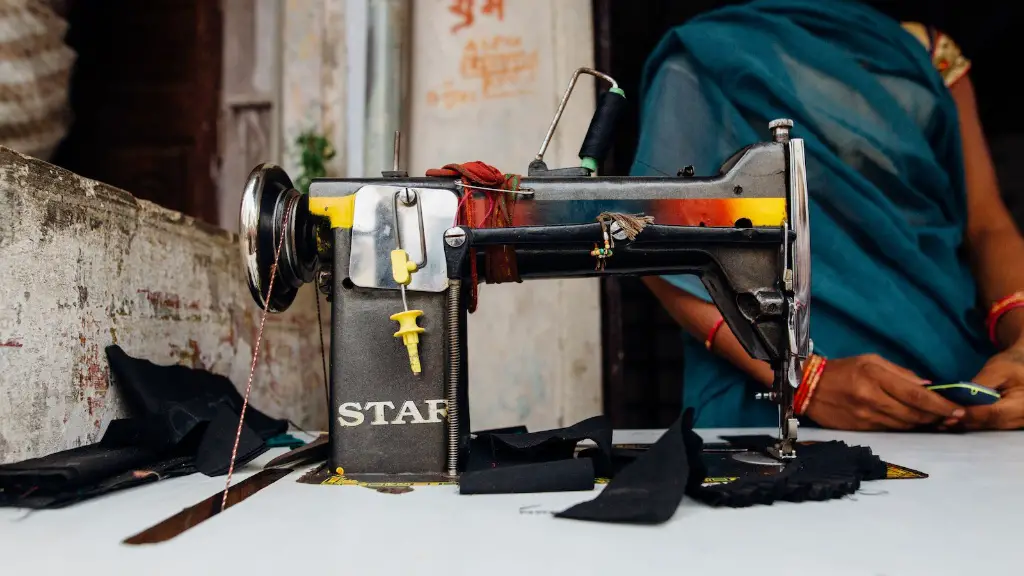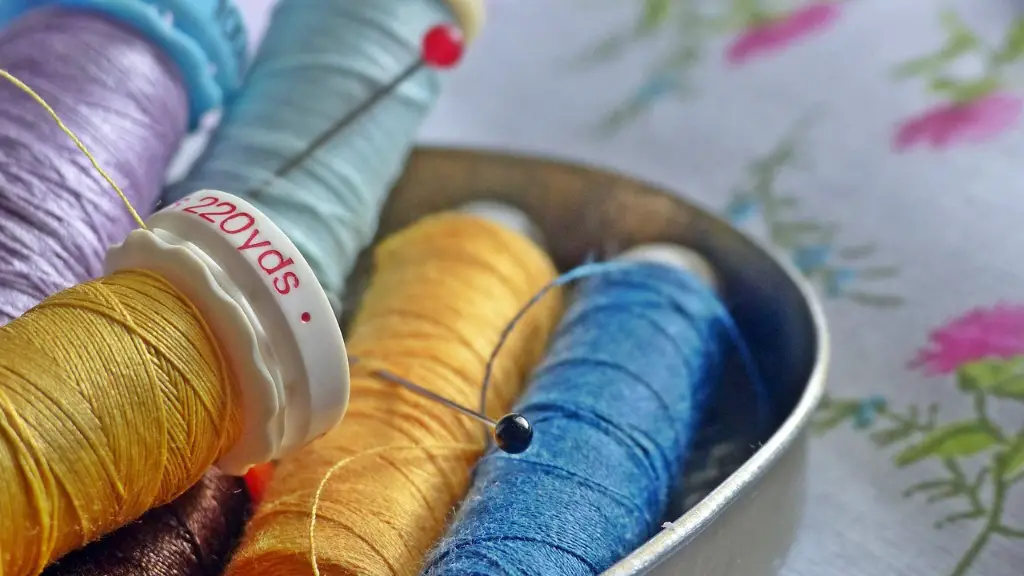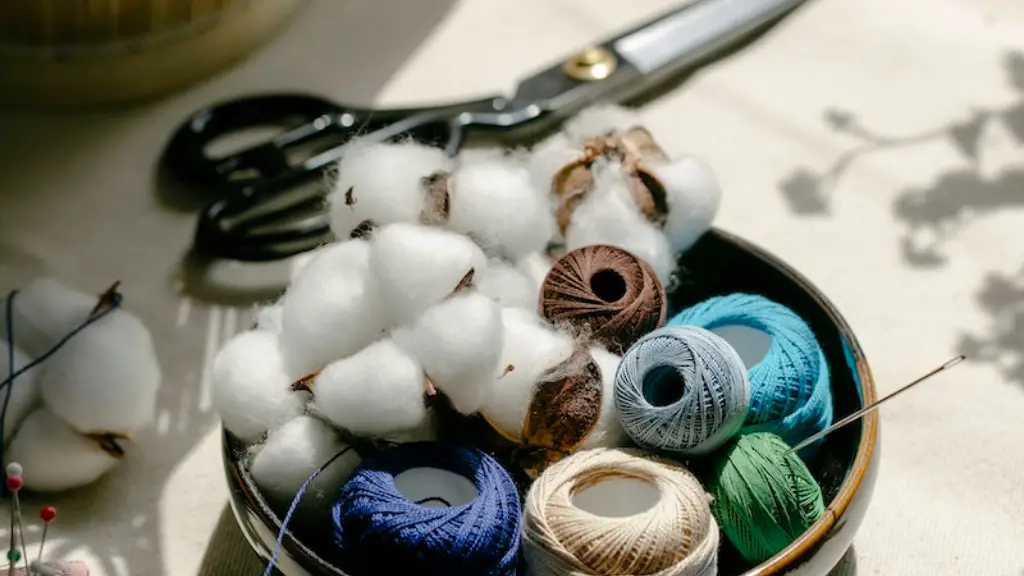What is a Walking Foot Sewing Machine?
A walking foot sewing machine is a machine designed to help in the sewing process, often used in quilting, tailoring, leather and upholstery. It is a specialty sewing machine that utilizes a specialized foot that helps feed heavy layers or difficult fabrics through the machine with precision. The walking foot works in tandem with the main foot, and helps greatly reduce the amount of force required to feed the fabric layers through the machine evenly and accurately.
How Does a Walking Foot Sewing Machine Work?
A walking foot sews a stitch just like a regular sewing machine, but the needle is slightly different. The foot on a walking foot sewing machine is designed to move back and forth with the fabric, creating an even feed and preventing the foot from getting stuck to the project. The foot’s small grippers also help hold the fabric taut after every stitch, which further helps in creating an evenly-sewn result.
The foot works in conjunction with the needle, which is also slightly different in shape. The movement of the walking foot forces the needle to penetrate more deeply into the fabric for a more secure stitch. The added tension created by the needle helps the material to “walk” smoothly under the foot.
Advantages of Walking Foot Sewing Machines
One of the main advantages of a walking foot sewing machine is that it can help you sew multiple layers of fabric at once. This is especially useful for big projects like quilts, where several layers of fabric need to be sewn together in order to make an even and neat final product. The foot helps reduce the friction created when working with thick material, allowing for a more even result.
A walking foot sewing machine also allows for more control over the stitch length and tension. The machine can easily be adjusted to stitch with a fine or heavy tension, so you can customize your project however you need to. Additionally, the foot helps keep the fabrics in place and helps guide them through the machine evenly.
Limitations of Walking Foot Sewing Machines
One of the limitations of a walking foot sewing machine is that they are generally more expensive than regular sewing machines. Additionally, they are usually much bigger and bulkier, so if you’re limited on space in your workspace then it might not be the most practical choice for you.
Another limitation is that walking foot sewing machines aren’t suitable for all types of fabrics and projects. For example, if you’re working on thin or lightweight fabrics, the foot might be too aggressive and cause damage. Additionally, because the walking foot can be quite heavy, it might not perform as well as a regular sewing machine on fine or delicate fabrics.
Where to Buy a Walking Foot Sewing Machine
If you’re looking to buy a walking foot sewing machine, there are a few options available. Most sewing and fabric stores carry a variety of different models, at a range of prices. You can also find them online, both used and new. It’s important to compare models and shop around to find the best price.
Additionally, you might want to reach out to a local tailor or seamstress to see if they could recommend any specific brands or models. Experienced sewers often know what type of machine is best for a particular project, and they might even be able to offer helpful tips and advice on how to best use the machine.
How to Maintain a Walking Foot Sewing Machine
In order to get the most out of your walking foot sewing machine, it’s important to properly maintain it. Make sure to routinely clean and oil the machine, particularly if you’re using it frequently. Regularly checking for any damage or malfunction is also important. Additionally, it’s a good idea to regularly inspect the foot itself to make sure it’s in good working order.
Many sewing machine manufacturers offer maintenance and repair services, so it might be worth looking into if you’re having any difficulties. You can also find helpful tutorials and videos online that might offer some useful tips and pointers.
What to Consider Before Buying a Walking Foot Sewing Machine
When you’re in the market for a walking foot sewing machine, there are a few things you should consider before buying. First, think about the type of projects you’ll be doing on the machine – more complex projects may require a more robust model. Additionally, you should consider the available features – some machines have features like automatic threading and adjustable feet, which make using the machine easier.
It’s also a good idea to do some research on different brands and models before committing to anything. You can also read reviews from experienced sewers to get a better idea of how the machine performs. Finally, make sure to check the price – it’s important to find something within your budget.
Essential Accessories for a Walking Foot Sewing Machine
In addition to the machine itself, there are a few accessories that can be helpful when you’re working with a walking foot sewing machine. A seam ripper is essential for removing stitches, and thread snips can be helpful for trimming excess thread. Additionally, a tailor’s ham is useful for pressing fabric, and a loop turner can be helpful when you’re sewing zippers and hems.
If you’re working with thicker or bulky fabrics, you may want to invest in a throat plate extension, which can help prevent the foot from getting stuck in the fabric. It’s also a good idea to have extra needles and bobbins on hand, as well as a variety of different feet for different types of projects.
Common Mistakes When Working with a Walking Foot Sewing Machine
One of the most common mistakes when working with a walking foot sewing machine is not checking the tension. If the tension is too loose, it can cause skipped stitches or uneven seams. It’s important to regularly check and adjust the tension to make sure it’s within the recommended settings.
Another mistake is not threading the machine correctly. If the thread isn’t properly threaded and routed, then it can cause the needle or the thread to break. Additionally, make sure to always use the right needle and foot for the fabric and project you’re working on. Finally, it’s important to pay attention to the movements of the foot and the needle – if the foot is pushing too hard or too forcefully against the fabric, it can damage the material.


